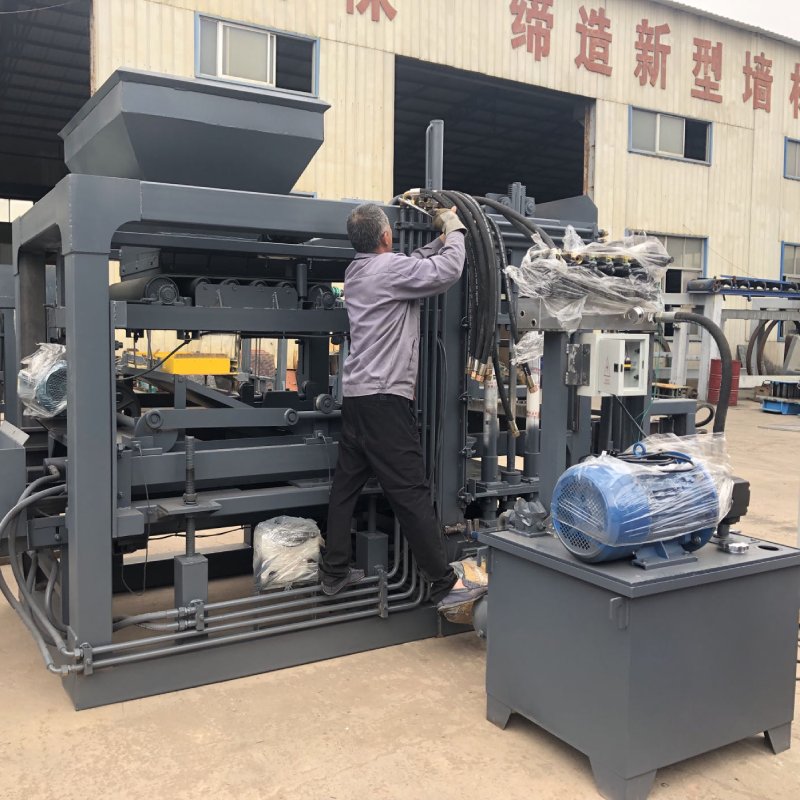
Image source Aiwei Block Machine
How Modern Brick Making Machinery Transforms Construction
Unleashing Efficiency, Precision, and Sustainability in Building Processes
The construction industry, a cornerstone of human progress, has always been at the forefront of innovation. From the ancient pyramids to the soaring skyscrapers of today, the methods and tools used to build our world have continually evolved. In recent times, the transformation of construction has been propelled by a technological revolution, and one of the most significant breakthroughs in this realm is modern brick making machinery. This article embarks on a comprehensive exploration of how modern brick making machinery is reshaping construction, revolutionizing efficiency, precision, and sustainability in building processes.
I. The Evolution of Brick Making: A Historical Perspective
The art of brick making traces its roots back to antiquity, with evidence of clay bricks dating back thousands of years. The process, however, remained labor-intensive and time-consuming until the advent of mechanization during the Industrial Revolution. As steam engines powered brick-making machines, the industry experienced a surge in production rates, albeit with limitations in precision and quality.
In the 21st century, the marriage of advanced technology and engineering has given rise to modern brick making machinery, pushing the boundaries of what was once thought possible. These machines combine automation, robotics, precision engineering, and sustainable practices to usher in a new era of construction efficiency and excellence.
II. Unveiling the Power of Modern Brick Making Machinery
The modern brick making machinery of today represents the culmination of centuries of innovation, resulting in machines that are as sophisticated as they are powerful. Let’s delve into the key elements that define their transformative impact on construction.
a) Automation Redefined: Automation lies at the heart of modern brick making machinery. Every stage of brick production, from raw material preparation to curing and quality control, is seamlessly orchestrated by intelligent systems. Robots, conveyor belts, and computerized controls work in unison, minimizing human intervention and maximizing efficiency.
b) Precision Engineering: The precision achieved by modern machinery is a game-changer. Bricks are produced with exacting dimensions, uniform shapes, and consistent textures. This level of precision eliminates irregularities, ensuring tight joints and symmetrical structures, all of which contribute to enhanced structural integrity and visual appeal.
c) Versatility in Design: Architects and builders are no longer confined by traditional brick shapes and sizes. Modern brick making machinery enables the production of custom-designed bricks that can be tailored to fit unique architectural visions. This newfound design versatility empowers creativity, allowing for the creation of intricate patterns, textures, and façades.
d) Efficiency Unleashed: Traditional brick making methods are time-intensive and reliant on manual labor. Modern machinery revolutionizes efficiency by significantly reducing production times. The continuous, automated operation of these machines means that bricks can be produced at a pace that was once inconceivable, accelerating construction timelines.
III. Transforming Construction Practices
The integration of modern brick making machinery into construction processes has far-reaching implications, revolutionizing the very essence of how we build.
a) Streamlined Construction: The efficiency brought about by modern machinery translates to streamlined construction processes. Projects are completed faster, reducing overhead costs and enabling developers to respond more swiftly to market demands.
b) Quality Assurance: The consistent quality produced by modern machinery is a boon for construction. Uniform brick dimensions and properties ensure reliable structural integrity, reducing the risk of defects, and facilitating the assembly of components with greater accuracy.
c) Sustainable Building: Sustainability is a critical consideration in modern construction. Many modern brick making machines incorporate environmentally friendly practices, such as recycling materials and optimizing energy consumption. The result is reduced waste, lower carbon footprints, and buildings that adhere to eco-conscious principles.
d) Labor Dynamics: The introduction of modern machinery also transforms the labor dynamics within the construction industry. While it may reduce the need for certain manual tasks, it opens up opportunities for specialized roles in machine operation, maintenance, and innovation.
IV. Case Studies: Concrete Examples of Transformation
To illustrate the real-world impact of modern brick making machinery, let’s explore two compelling case studies that highlight the transformative potential of these machines.
a) Innovative Skyscraper: In a bustling urban metropolis, a towering skyscraper stands as a testament to modern engineering and architectural creativity. Modern brick making machinery played a pivotal role in producing the precisely shaped and textured bricks that adorn the building’s façade. The result is a breathtaking visual masterpiece that captures the essence of technological advancement and artistic ingenuity.
b) Sustainable Community: In a rapidly urbanizing region, a sustainable housing community emerges, providing a haven of green living amidst the concrete jungle. Modern brick making machinery has been instrumental in producing environmentally friendly bricks from locally sourced materials, showcasing how technology can contribute to both human comfort and ecological harmony.
V. Challenges and Future Frontiers
While modern brick making machinery offers a plethora of benefits, it also presents challenges and opportunities on the horizon. Initial investment costs, training requirements, and the need for ongoing maintenance are considerations that must be navigated. Moreover, as technology evolves, the future promises even more sophisticated machinery, potentially incorporating artificial intelligence, predictive analytics, and enhanced material science.
VI. Conclusion: Paving the Path to Progress
Modern brick making machinery stands as a beacon of progress in the construction industry, reshaping the way we envision, plan, and construct the structures that shape our world. Through automation, precision, and sustainability, these machines have unlocked new dimensions of efficiency and quality. As we embrace the power of modern brick making machinery, we embark on a journey toward a future where construction is not only about erecting buildings but also about building a sustainable, efficient, and visually captivating world that reflects the limitless potential of human innovation.
